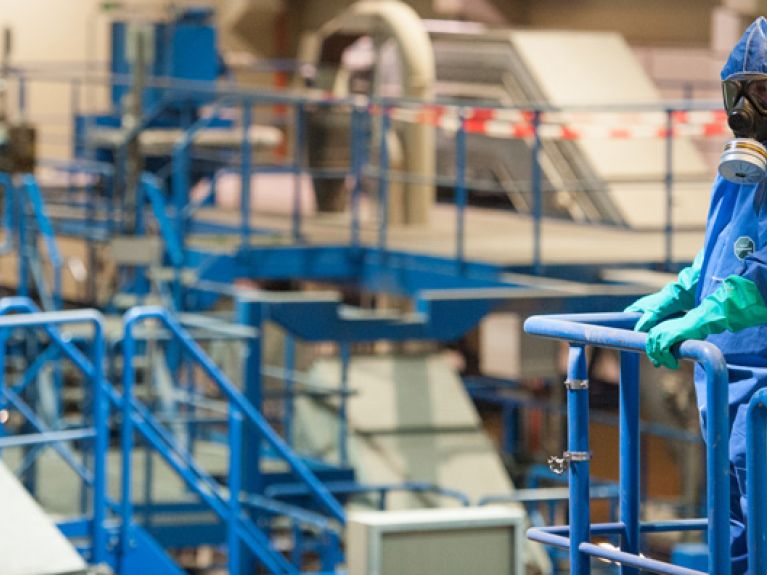The destruction of chemical weapons
Residues of Syrian chemical weapons are being disposed of in an environmentally safe manner at GEKA, a federally-owned facility in Munster.

There was great relief when Syria agreed to the destruction of its chemical weapons in summer 2013 as a result of pressure from the international community. Initially, however, two important questions remained unanswered. Where should the weapons be destroyed? And how? Eventually the United Nations (UN) and the Organisation for the Prohibition of Chemical Weapons (OPCW) agreed on their transportation and destruction outside Syria. The US ship Cape Ray was given responsibility for neutralising the dangerous chemical agents in the Mediterranean – accompanied and protected by a German frigate. Germany also declared its willingness to carry out the environmentally safe disposal of large amounts of the waste residues.
Destruction could be completed in 2014
Not many countries have the know-how and the capacity to dispose of chemical weapons. One specialised company in this field is Gesellschaft zur Entsorgung von chemischen Kampfstoffen und Rüstungsaltlasten (GEKA). The Munster-based enterprise was founded in 1997 to dispose of the legacies of the world wars. After the chemical weapons have been decomposed through hydrolysis by adding water and other substances in a closed system on board the US vessel, the resulting hydrolysate is put into tanks and transported to Germany. The saline, aqueous, slightly toxic substance is comparable with conventional industrial waste of the kind that is incinerated in large quantities at special facilities in Europe. Only harmless salts remain after incineration with flue gas purification. In all, it is planned to dispose of 370 tonnes of the liquid residues of Syrian chemical weapons. If everything goes according to plan, the destruction should be completed before the end of 2014.

